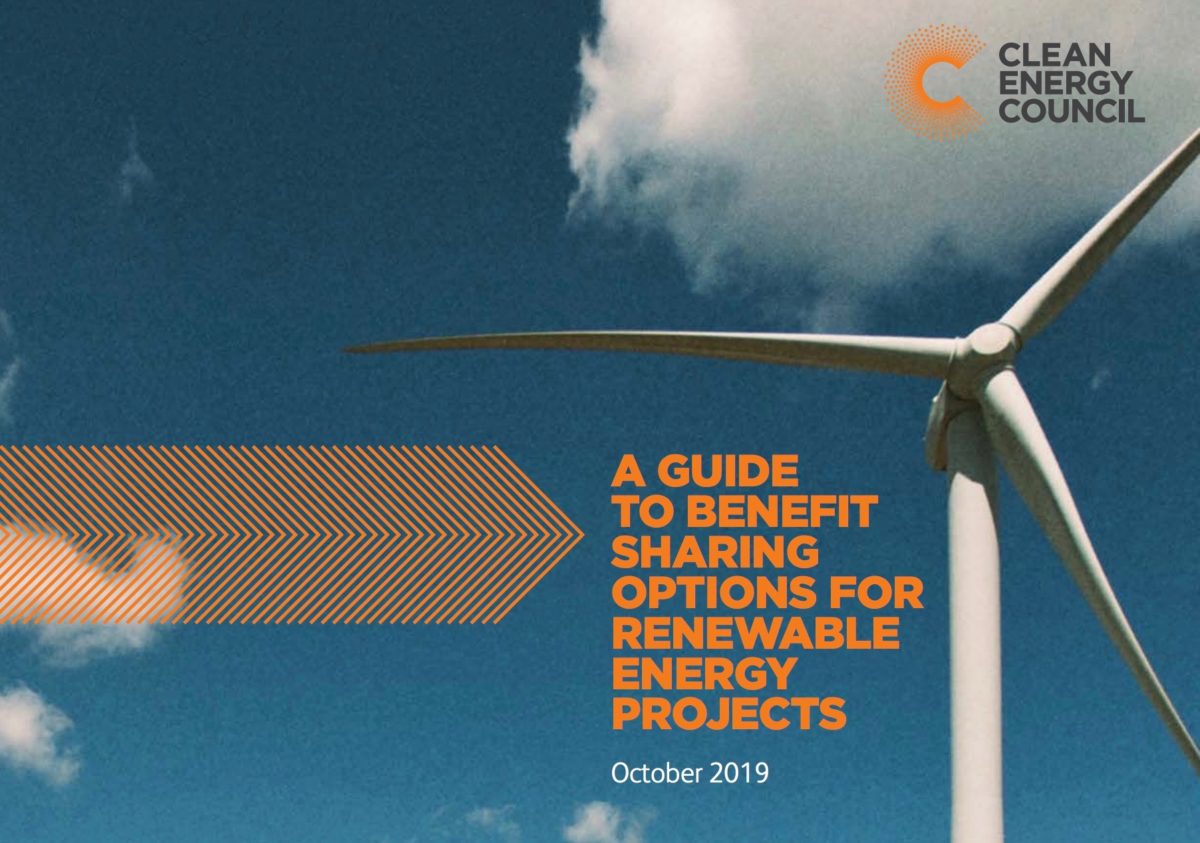The Clean Energy Council (CEC) has released a research report on benefit sharing options for renewable energy projects. The report, A Guide to Benefit Sharing Options for Renewable Energy Projects, received funding from the Australian Renewable Energy Agency (ARENA) and seeks to highlight the variety of options available to the proponents of large-scale renewable energy projects to share benefits with the community.
The timing of the report is impeccable for the CEC, which is hosting its inaugural Clean Energy Open Day at wind and solar farms across five states on Sunday 27 October. The Open Day is the perfect opportunity for those curious about renewable energies and the energy transition, or simply those on the hunt for a good sausage sizzle. Whatever the case may be, it is demonstrative that the CEC, in its interaction with local communities, is practising what it preaches.
The report’s authors, Taryn LLane and Jarra Hicks, present it as a practical tool to assist project proponents, financiers, policymakers and communities to share the rewards of renewable energy development with local communities. The report “is based on a desire to establish and maintain positive long-term connections to the area and to be a good neighbour.”
Among the major strategies touched upon in the guide are neighbourhood benefit programs, the creation and grant funds and innovative financing methods that would enable community co-investment or community co-ownership.
However, this is not to say that all community interaction requires the transaction of cash. Renewable energy projects can provide great benefits to the community through economic development with local jobs and contracting, employee volunteerism and partnerships with industry networks and toward opportunities for education.
Thornton, CEO of the CEC, stated that the desire of the CEC is “benefit sharing, tailored to the local context, becomes a feature of all renewable energy projects.”
Benefit sharing benefits the project proponents as much as it does the local communities. As the report’s author’s note, financiers and governments now often require projects and developments to have a strong social licence to operate in the proposed community. Of course, renewable energy’s inherent qualities ensure a good first impression upon any community, but proper engagement and benefit sharing ensure the kind of social licence that can be the difference between getting a project off the ground or not.
Moreover, once a project is generating energy, it will need consumers to purchase it. More and more large consumers are getting their energy via power purchase agreements (PPAs), such as universities, councils and manufacturing businesses. Quality benefit sharing ensures the attractiveness of a large-scale project to potential buyers.
“Good community engagement and benefit sharing can be a cost-saving exercise” added Pacific Hydro. “Sometimes, you need to invest money upfront. Think about things like the cost of double glazing compared to the cost of ongoing complaint management over 25 years.”
The report sets out a series of pathways for developers to create models of benefit sharing and community engagement. One such immediate route is the acknowledgement and respect of traditional landowners. As approximately 40% of the Australian landmass is ‘Indigenous Estate’, it is increasingly likely that large-scale renewable projects will involve engagement and agreements with Indigenous communities.
One such example is the Asian Renewable Energy Hub (AREH) a wind and solar hybrid megaproject in the Pilbara, Western Australia. AREH is located on Nyangumarta land, and as such CWP Renewables has been in close contact and negotiations with Nyangumarta people in search of ways to share the project’s opportunities and benefits.
For Indigenous people, the reduction in dependence on diesel generators and achievement of energy independence through solar + battery hybrid systems could provide a pathway to encourage people to ‘Return to Country’ and “improve the resilience of remote communities.”
Benefit sharing models are relatively new in Australia, though they have seen great success globally since the 1980s, especially in Europe and particularly in the form of community co-investment or co-ownership.
In the solar industry, this can take the form of solar gardens or virtual solar models by which locals can purchase shares in a solar farm (or shares in its output), and the output from their shares is credited directly to their electricity bill.
To read the full report, see here.
This content is protected by copyright and may not be reused. If you want to cooperate with us and would like to reuse some of our content, please contact: editors@pv-magazine.com.









By submitting this form you agree to pv magazine using your data for the purposes of publishing your comment.
Your personal data will only be disclosed or otherwise transmitted to third parties for the purposes of spam filtering or if this is necessary for technical maintenance of the website. Any other transfer to third parties will not take place unless this is justified on the basis of applicable data protection regulations or if pv magazine is legally obliged to do so.
You may revoke this consent at any time with effect for the future, in which case your personal data will be deleted immediately. Otherwise, your data will be deleted if pv magazine has processed your request or the purpose of data storage is fulfilled.
Further information on data privacy can be found in our Data Protection Policy.